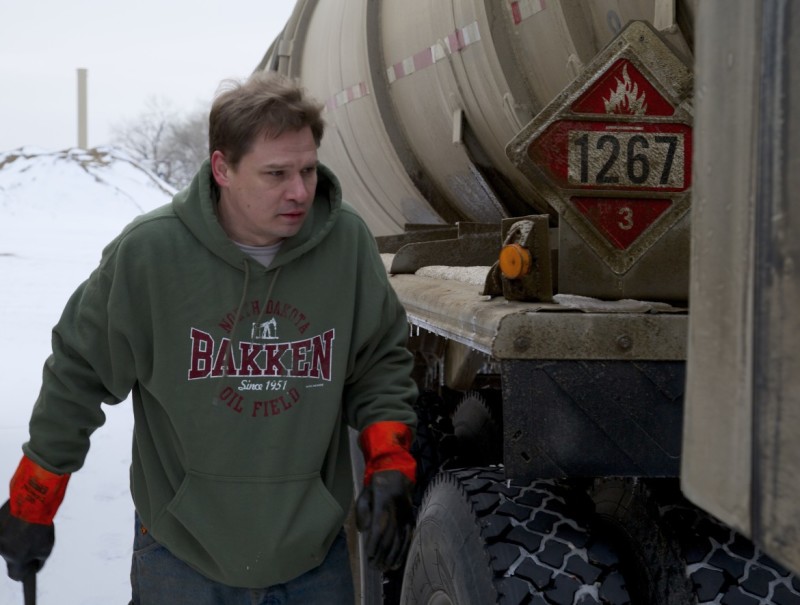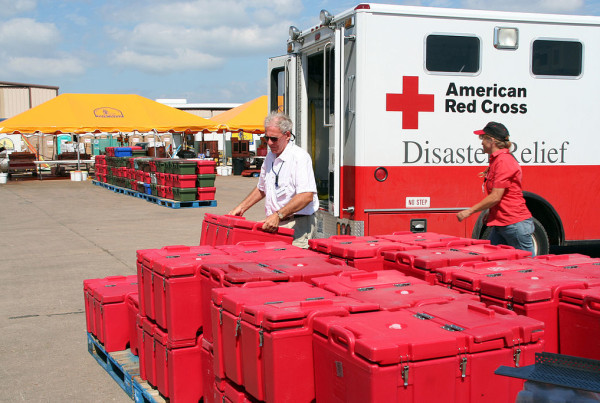This story originally appeared on Inside Energy.
Dustin Bergsing was a young, fit bull rider from Montana. On a cold night in January 2012, he climbed to the catwalk on top of a 20 foot tall crude oil storage tank on an oil well pad in North Dakota’s Bakken oilfield. His job was to pop open the small hatch on top and drop a rope inside to measure the level of oil.
Just after midnight, he was found dead by a co-worker, slumped on the catwalk.
At first, people suspected Dustin had died from inhaling a gas called hydrogen sulfide, a known oilfield killer that can be deadly after just a few minutes. But an autopsy revealed Dustin didn’t have any of that in his system.
Instead, his blood contained hydrocarbons like benzene, ethane and butane – the same compounds that are in natural gas. At that point, few people had heard of oil workers dying out in the open from inhaling petroleum gases. But because Dustin’s case caught the eye of an investigative reporter who teamed up with a doctor, four years later, oilfield hydrocarbon vapor poisoning is a known occupational hazard.
Despite this, thousands of workers are still being exposed every day as a routine part of doing their jobs because of outdated federal regulations that make it very difficult to use new technology that would get workers off of tanks.
OSHA Investigation
When the Occupational Safety and Health Administration investigated Dustin’s death, the agency closed the case because Dustin didn’t have any of the known killer hydrogen sulfide in his body. “A citation could not be supported for work-related exposure,” they wrote, and declined to fine Dustin’s employer.
Later that year, Mike Soraghan, a reporter who covers oil and gas for EnergyWire, a online business publication, came across Dustin’s case while working on a story about oilfield fatalities. He was dumbfounded:
“I just remember reading through (the OSHA report) and thinking, ‘that’s it?’ A 21-year old kid just sort of dies out in the middle of nowhere and sort of nothing happens?’”
There are a lot of ways to die as an oil worker. In 2012, the year Dustin died, it was seven times more dangerous than the average U.S. industry. But even in the oilfield, it is unusual for a healthy 21-year-old to drop dead on an oil well pad.
Soraghan is one of those people who doesn’t like not knowing things. So when he didn’t understand what had killed Dustin, and why no one was held accountable, he couldn’t let it go. He teamed up with a doctor, and together the two of them went on to help solve the deaths of eight other oilfield workers. That doctor was Bob Harrison, a clinical professor at University of California San Francisco who specializes in occupational and environmental medicine.
Soraghan met Harrison at an oil and gas safety conference in 2013 where he a speaker. He pulled him aside and told him about Dustin’s case. Harrison was intrigued.
First, there was the fact that OSHA had declined to issue a citation to the company, even though petroleum gases had been found in Dustin blood. That suggested to Harrison that Dustin’s death was work-related.
Second, he had never heard of an oil worker dying that way before.
And third, he didn’t believe the rumors that Dustin had been up on the tank trying to deliberately get high off the petroleum gases. “Frankly, there are a lot easier ways to get high than going out in your long johns at 1:30 in the morning, in North Dakota, to gauge an oil tank,” Harrison said. “It just didn’t add up to me.”
Harrison was convinced that, similar to hydrogen sulfide, you could die after just a few minutes of breathing high concentrations of petroleum gases. He suspected Dustin had passed out when he opened the hatch on the oil tank and was engulfed by a cloud of petroleum gas. The gas killed him by displacing the oxygen in the air, and it caused him to stop breathing.
















